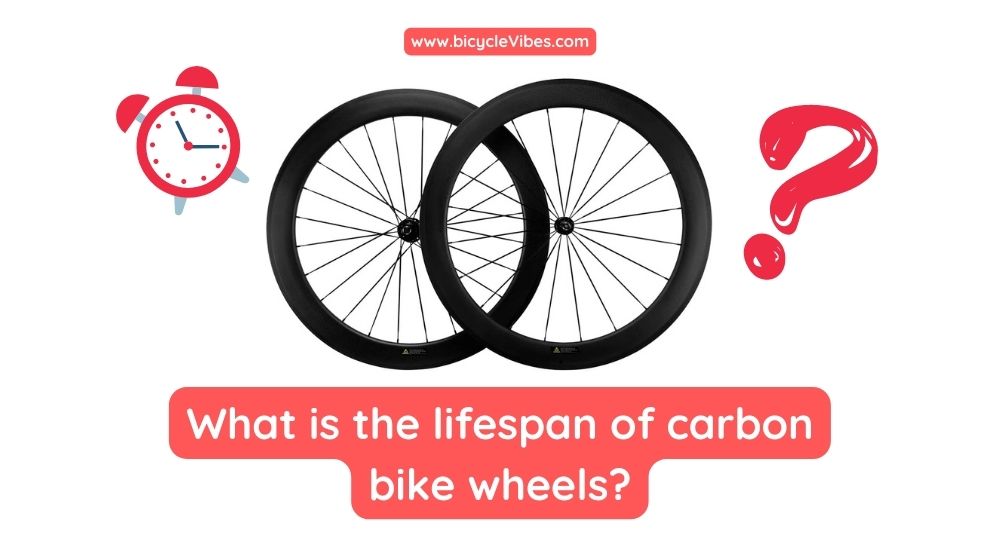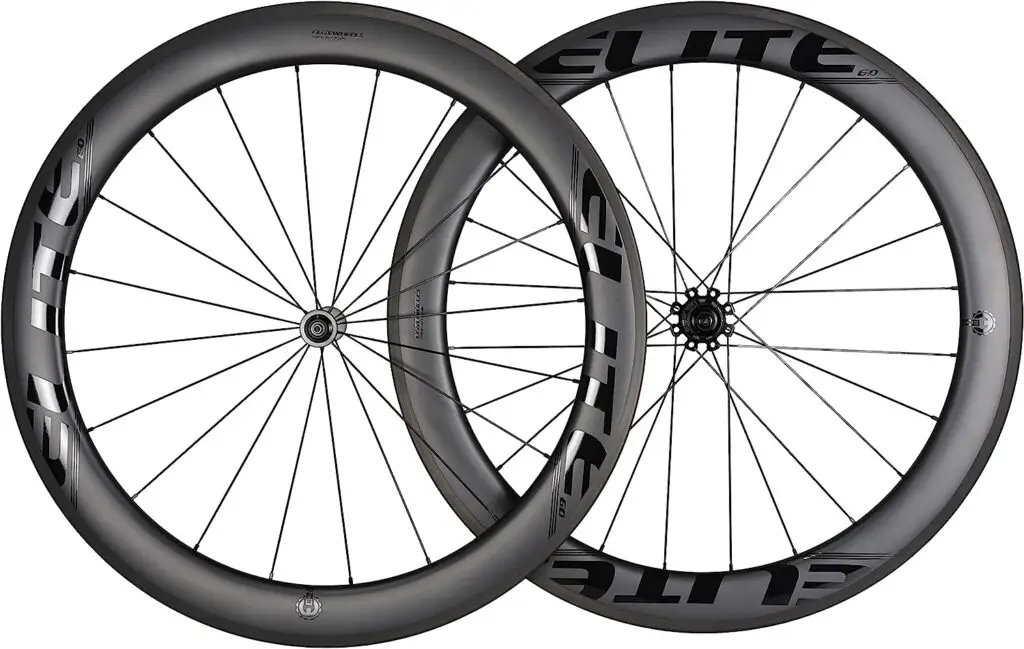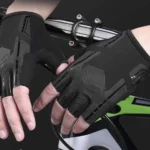
Bicycling is an invigorating activity that can benefit your entire body, promote outdoor activity and enhance overall well-being. However, purchasing a bicycle can be a daunting task as it involves weighing expenses, longevity, and other considerations. If you’re considering a bike with carbon wheels, rest assured that longevity should be the least of your concerns.
Carbon bike wheels can last up to ten years, depending on factors such as usage, terrain, and maintenance. That being said, it’s crucial to address any damage to the wheels and regularly inspect them for signs of wear and tear. This includes checking for bent or chipped rims, loose or broken spokes, uneven tread, loose tire beads, a bent axle, a broken hub, and wobbly tires.
To ensure the safe and optimal performance of your bicycle, it’s essential to pay attention to these signs of damage and replace the wheels as needed. In this article, we’ll explore the different signs of wheel damage and the recommended frequency for replacement.
Table of Contents
What are the signs that indicate your carbon bike wheels are no longer usable?
When it comes to carbon bike wheels, it’s important to keep an eye out for signs of damage to ensure your safety and enjoyment during rides. If your wheels have sustained significant damage, you may notice visible physical signs, such as cracks or dents in the rim or spokes, or the wheel may not rotate as smoothly as it did previously.
Regularly inspecting your wheels for loose spokes or other signs of wear and tear is essential. If you notice any of these indications, it’s likely that your wheels are no longer safe to use. In such cases, it’s recommended to replace the damaged wheels promptly to avoid any potential safety risks.
What are the indications of bike wheel damage?
Although bike wheels generally have a long lifespan, the usage and maintenance of the bike can affect its longevity. When bikes are well-maintained, they can live up to the age specified by the manufacturer. However, there are some inevitable signs of damage that can appear on wheels over time.
Loose Spokes
A crucial component of a bike wheel is the spoke rod, which connects the hub to the rim. Spokes provide support for the wheel and transmit power from the hub to the rim. These rods are commonly made of metal, but they can also be made of other materials like plastic or carbon fiber.
Loose spokes on a bike can be dangerous and should be tightened as soon as possible. The best way to tighten loose spokes is to use a spoke wrench and carefully turn each spoke until it’s tightened. It’s important to regularly check all the spokes to ensure they are properly tightened.
If you don’t have a spoke wrench, you can purchase one from a bike shop or online. Alternatively, you can take your bike to a bike shop and have them check and tighten any loose spokes to ensure the safety of your ride.
Bent Or Warped Rims
If you notice that your bike’s rims are bent or warped, it’s crucial to address the issue as soon as possible. Such damage can significantly impact your bike’s performance and safety. Therefore, it’s recommended that you have them inspected by a professional wheel technician if you suspect any issues.
During the inspection, the technician will evaluate the condition of your rims and determine if they are safe to use. If the rims are found to be bent or warped, the technician will recommend appropriate action, such as repair or replacement, depending on the severity of the damage.
Cracked Or Chipped Rim
If you notice any cracks or chips on your bike’s rim, it’s crucial to have it inspected by a professional. Depending on the severity of the damage, the rim may not be repairable, and you may need to purchase a new one.
It’s important to address any issues with your rim promptly, as further damage could cause your tire to lose air or your bike to become unbalanced, leading to potential accidents or injuries. Therefore, getting the rim fixed or replaced as soon as possible is essential for your safety and the performance of your bike.
Uneven Wear On Tire Tread
The tread pattern on a tire’s surface is responsible for providing traction, especially on wet or snowy roads. The grooves help disperse water and snow, improving grip and enabling the tire to maintain contact with the road.
However, various factors can cause uneven wear on tire tread. These include improper tire pressure, misaligned wheels, worn suspension components, incorrect wheel alignment, and worn or unevenly worn tires. Rough roads or off-road terrain can also contribute to uneven wear.
To avoid uneven wear and ensure your tires last longer, it’s essential to check the tire pressure, alignment, and suspension system regularly. Additionally, have the tires inspected and rotated on a routine basis to ensure they wear evenly.
Uneven Or Loose Tire Bead
The tire bead is a critical part of the tire that is designed to hold it firmly onto the rim of the wheel. Typically made of steel wire and reinforced with rubber, it provides the necessary strength and flexibility to keep the tire securely in place.
If the tire bead is loose or uneven, it may be a sign that the tire has not been properly inflated. In such cases, the tire should be removed from the rim and re-inflated to the correct pressure.
If this does not resolve the issue, you may need to adjust the bead of the tire by loosening the rim and shifting it slightly. However, if the tire bead remains uneven or loose even after these adjustments, it may be necessary to replace the tire altogether.
Cracked Or Broken Spokes
Additionally, it is important to check the tension of all spokes on your wheel regularly, as loose or tight spokes can cause damage to the wheel over time. You can check the tension by plucking each spoke like a guitar string and listening for a consistent sound.
If you notice any loose or tight spokes, you can adjust them using a spoke wrench. However, if you are unsure how to do this, it is best to take your bike to a professional to have it checked and adjusted.
Bent Or Broken Axle
If a bike’s axle is bent or broken, it’s usually a result of an accident or hard impact. To fix this issue, the best course of action is to replace the axle with a new part. While it’s possible to straighten a bent axle with a hammer and vice, it’s advisable to opt for a new axle to ensure optimal performance and reliability.
Replacing the axle is a relatively simple process that can be done with basic tools. First, remove the wheel from the bike and then disassemble the hub to access the axle. Once the old axle is removed, insert the new one and reassemble the hub.
Wobbling Of Wheel When Spinning
A wheel wobbling while spinning is often a result of an imbalance in the wheel, which can be due to unevenly distributed weight or a manufacturing defect. Fortunately, fixing this issue is relatively straightforward.
To begin with, the wheel needs to be spun to determine the source of the wobbling. Once the cause has been identified, the weight distribution can be adjusted accordingly. If the imbalance is due to a manufacturing defect or the adjustment doesn’t fix the issue, the wheel will need to be replaced.
Excessive Play When Spinning The Wheel
When spinning the wheel of a bike, excessive play can indicate several potential issues. One common cause of wobbling is an improperly seated wheel in the dropouts. To fix this problem, the wheel needs to be correctly seated in the dropouts to prevent the axle from moving around.
If the axle is bent, it can cause the wheel to wobble, and replacing it with a new part is the best solution. Loose or damaged bearings can also cause wobbling, and it’s important to tighten or replace them to prevent further issues.
Dented Or Cracked Hub
A dented or cracked hub can seriously compromise a bike’s performance and safety. The hub is a central component of the wheel, connecting the spokes to the axle, and containing bearings that enable the wheel to rotate smoothly.
If you suspect that your bike’s hub is dented or cracked, it’s crucial to replace it as soon as possible. Riding with a damaged hub can result in various issues, such as wheel misalignment, poor handling, and even complete wheel failure. Replacing the hub is typically a straightforward process, but it’s important to ensure that the new hub is compatible with your bike and installed correctly.
How Long Do Carbon Wheels Last?
Carbon wheels can be a significant investment for cyclists, so it’s essential to understand how long they can last with proper maintenance and care. The lifespan of carbon wheels can depend on several factors, including usage, the type of carbon used, and the conditions they are used in.
With proper maintenance and care, a quality carbon wheelset can last up to 10-15 years. However, this lifespan can vary depending on the type of riding, the terrain, and the amount of use the wheels receive. In mountainous areas, carbon wheels can last at least five years of regular use, while in flatter areas, they can last anywhere from 5 to 10 years.
How Often Should Bike Wheels Be Replaced?
Bike wheels require replacement upon displaying signs of wear and tear. If a rider observes wobbliness, out of true alignment, or visible spoke damage, the wheels must be replaced.
To ensure optimal performance, bike wheels need replacement every two to three years, depending on the distance traveled and terrain traversed. Transition words such as ‘however’ or ‘nonetheless’ can help connect ideas, thereby increasing coherence.
Comparison of Bike Wheels between Mountainous and Flat Terrain
Bike wheels exhibit varying performance based on the terrain, with mountainous and flat terrain presenting distinct challenges. Mountainous terrain imposes additional stress, torque, and weight on the wheels. Therefore, the wheels must be able to handle the demands of climbing and descending while navigating extreme terrain changes. Furthermore, mountain bike wheels should be durable enough to withstand frequent obstacles, such as rocks and roots, present in mountainous terrain.
On the other hand, flat terrain wheels face less stress and torque, but occasional bumps and obstacles may still occur. For flat terrain, lightweight and aerodynamic wheels are optimal as they enable faster speeds with less effort. Additionally, deeper rims and a higher spoke count may improve stability and provide a smoother ride. Transition words such as ‘additionally’ or ‘moreover’ can help connect ideas and improve coherence.
What is the recommended frequency for replacing bike wheels in mountainous terrain?
The frequency of wheel replacement can vary significantly based on several factors, including the type of terrain, mountain biking style, and the rider’s skill level. Typically, mountain bike wheels necessitate replacement every 1,000 to 2,000 miles or every two to three years.
Nonetheless, if one frequently rides in rocky or technical terrain, wheel replacement may be required more frequently. Transitional words such as ‘nonetheless’ or ‘however’ can improve the flow of the ideas presented.
To Sum Up
Carbon bike wheels rank among the most durable bike components, often capable of lasting for a decade of biking. Moreover, carbon is lightweight and sturdy, making it a suitable material for wheel construction. Consequently, if a bike with carbon wheels is on offer, there is little cause for concern. Go ahead and acquire the bike and enjoy a healthy and fun activity that you can sustain for an extended period. The use of transition words such as ‘moreover’ or ‘consequently’ can help improve the flow of ideas in a paragraph.










